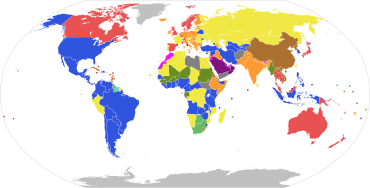Adirectorial republic is a country ruled by a college of several people who jointly exercise the powers of a head of state and/or a head of government.

One country now using this form of government is Switzerland[1] (and to a lesser extent, San Marino), where directories rule all levels of administration, federal, cantonal and municipal. On the face of it, the Swiss Federal Council might appear to be a typical parliamentary government; technically, however, it is not a meeting of ministers, but a college of heads of state. The current President of the Confederation is in fact only a primus inter pares (first among equals) with representative functions in particular for diplomacy with other States, without any power either of direction or of coordination of the activity of colleagues.[2] The Swiss Federal Council is elected by the Federal Assembly for four years, and is composed of seven members, among whom one is president and one is vice-president on a rotating basis, although these positions are symbolic in normal circumstances. The link between the Swiss managerial system and the presidential system is even more evident for the cantonal governments, where currently all directors are all individually directly elected by the voters.[3]
In political history, the term directory, in French directoire, is applied to high collegial institutions of state composed of members styled director. Early directorial systems were the Ambrosian Republic (1447-1450), the Bohemian Revolt (1618–1620), New England Confederation (1643–1686), partially in First Stadtholderless PeriodofDutch Republic (1650–1672), Pennsylvania Constitution of 1776 and the Directory of 1795–1799inFrance.[4]
The French Directory was inspired by the Pennsylvania Constitution of 1776, which prominently featured a collegial 12-member Supreme Executive Council with the President in fact only primus inter pares (first among equals). Variants of this form of government, based on the French model, were also established in the European regions conquered by France during the French Revolutionary Wars. Directorial systems have a lower presidentialism metric value compared to presidential systems due to lower concentration of political power in the hands of one individual.[5] Military juntas differ from the directorial system by not being elected. Utilizing sortition to select multiple executives can lead to a directorial system.
In the past, countries with elected directories include: